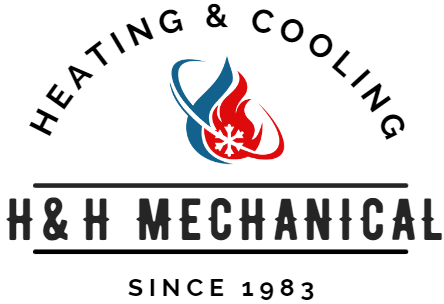Why Is My Furnace Not Working? Common Causes and Solutions
As the weather starts to cool down, a malfunctioning furnace can quickly make your home feel uncomfortable and chilly. If you find yourself in a situation where your furnace is not working, it's important to understand the potential causes so that you can troubleshoot or seek professional help promptly. In this blog post, we will explore some common reasons why your furnace may not be functioning properly and provide possible solutions.
Thermostat Issues:
A common culprit for a non-functioning furnace is a problem with the thermostat. Ensure that the thermostat is set to the desired temperature and is in the correct mode (heating or cooling). If it runs on batteries, check if they need to be replaced. Additionally, dusty or dirty thermostat sensors can cause inaccurate temperature readings, leading to furnace issues. Cleaning the thermostat or replacing it may be necessary.
Power Supply Problems:
Check if your furnace is receiving power. Verify that it is plugged in or that the circuit breaker for the furnace is not tripped. A blown fuse or a tripped breaker can prevent the furnace from getting the required power supply. If any issues are found, reset the breaker or replace the fuse (if applicable). If the problem persists, consult a professional to check the electrical connections.
Pilot Light or Ignition Control Issues:
If your furnace has a pilot light, check if it is lit. A pilot light that has gone out can prevent the furnace from turning on. Follow the manufacturer's instructions to relight the pilot light safely. For furnaces with electronic ignitions, faulty ignition controls could be the cause of the problem. Contact a professional technician to inspect and repair the ignition system if needed.
Dirty or Clogged Filters:
A dirty or clogged air filter can disrupt the airflow in your furnace, leading to reduced efficiency or even a complete shutdown. Check the air filter and replace it if it is dirty or clogged. Regularly changing the air filter, according to the manufacturer's recommendations, can prevent future issues and help maintain optimal furnace performance.
Lack of Maintenance:
Neglecting regular furnace maintenance can lead to various problems. Dust and debris accumulation, worn-out parts, or faulty components can affect the overall performance of your furnace. Schedule routine professional maintenance to keep your furnace in top shape and identify potential issues before they become major problems.
Conclusion:
When your furnace fails to work, it can be frustrating and uncomfortable, especially as the colder months approach. By understanding some of the common causes for a malfunctioning furnace and implementing the suggested solutions, you can troubleshoot minor issues on your own or seek professional assistance when needed. Remember, if you are unsure or uncomfortable performing any troubleshooting steps, it's always wise to consult a qualified HVAC technician, like the ones that work at H & H Mechanical. So give us a call today!
You might also like

By Loren Crabtree
•
April 8, 2025
Top 5 Energy-Zapping Habits in the Summer The shift to warmer weather can come with a noticeable increase in our energy bills. As temperatures rise, so does the tendency to engage in habits that, while providing short-term relief, significantly contribute to energy wastage. Identifying and adjusting these energy-zapping habits can lead to not only a more environmentally friendly lifestyle but also substantial savings. Here are the top five habits to be aware of and adjust this summer. 1. Overusing Air Conditioning While air conditioning is a modern luxury that can make the hot summer months bearable, excessive use is among the top energy-zapping habits. Setting the thermostat too low or leaving the AC on when no one is home contributes to unnecessary energy consumption. Tip: Consider installing a programmable thermostat or a smart home system that allows you to schedule cooling times and adjust settings remotely. Setting your thermostat to a higher temperature when you’re not home can lead to significant savings. 2. Ignoring HVAC Maintenance A well-maintained HVAC system operates more efficiently and uses less energy. Neglecting routine maintenance such as replacing filters or ignoring signs that the system may not be working efficiently can lead to higher energy consumption. Tip: Schedule regular maintenance checks and clean or replace the air filter every 90 days or as recommended by the manufacturer to keep your system running smoothly. 3. Frequent Opening of Refrigerator Doors It might seem trivial, but the habit of opening the refrigerator frequently can cause a significant increase in energy usage. Each opening allows cool air to escape, forcing the fridge to work harder to maintain its internal temperature. Tip: Try to limit the number of times you open the fridge door by planning what you need ahead. Keeping the fridge and freezer well-organized can also help minimize the time the door stays open. 4. Overdoing the Use of Heat-Producing Appliances Summer is not the best time to frequently use ovens, stovetops, or other appliances that produce a lot of heat. These not only contribute to the ambient temperature of your home (making your AC work harder) but also use a lot of energy. Tip: Opt for meals that require minimal cooking, use a microwave or slow cooker, or consider grilling outdoors. 5. Poor Insulation and Air Leaks Poor insulation and air leaks around doors and windows allow cool air to escape, which can significantly increase the workload on your air conditioning unit. This, in turn, increases energy consumption. Tip: Invest in quality insulation, and use weather-stripping around doors and windows to seal leaks. These improvements can provide long-term savings and a more comfortable living environment. Summertime should be a season of enjoyment, not high energy bills. By being mindful of these top energy-zapping habits and making a few adjustments, you can enjoy a cool, comfortable home without breaking the bank. Start implementing these tips today for a more energy-efficient summer.

By Loren Crabtree
•
March 25, 2025
Why You Might Not Change the Ductwork When Replacing Your HVAC System When it comes time to replace your HVAC system, a question that frequently arises is whether the existing ductwork also needs to be replaced. Surprisingly, the answer isn't always a resounding yes. While it might seem logical to overhaul everything at once for efficiency's sake, several compelling reasons might sway your decision to retain the existing ductwork. Here's why: 1. Condition of Existing Ductwork The primary consideration is the condition of your current ductwork. If it's in good shape, free from leaks, and not showing signs of significant wear like corrosion or damage, it can often remain in place. Quality ductwork can last decades if properly installed and maintained, meaning it might outlast an HVAC unit itself. 2. Cost Efficiency Replacing ductwork is an extensive and sometimes invasive process that can significantly add to the overall cost of HVAC system replacement. If the current ductwork is still functional and efficient, keeping it can save you a substantial amount of money and time. It's all about balancing the cost versus benefits, and if the ductwork isn't contributing to energy loss or performance issues, the expenditure might not be justified. 3. Compatibility and Sizing In many cases, the existing ductwork is perfectly compatible with the new HVAC unit. Proper sizing is critical for the efficiency of the HVAC system — if the ducts were correctly sized for the old unit, and the new unit is of a similar size and capacity, there's often no need for adjustment. However, significant changes in the size or type of HVAC system could warrant a reassessment and potential replacement of the ductwork. 4. Minimal Performance Gains The performance boost from replacing ductwork might not be as significant as expected, particularly if your existing ducts are in good condition. The efficiency and functionality of your HVAC system depend largely on the unit itself, proper installation, and regular maintenance. While new ductwork can offer improvements, especially if the old system had issues, the marginal gains might not always justify the cost for systems already operating efficiently. 5. Environmental Considerations Retaining existing ductwork can also be a more environmentally friendly option. By not replacing the ducts, you're reducing waste and the demand for new materials. This approach aligns with the principles of reducing, reusing, and recycling, contributing to a lower environmental impact. Final Thoughts Deciding not to replace the ductwork during an HVAC system upgrade isn't about cutting corners; it's about making an informed choice based on the condition, compatibility, and the potential cost and environmental impact. However, it's crucial to have your current system evaluated by a professional to ensure that keeping the existing ductwork is the best decision for your home's comfort and efficiency. Regular inspections and maintenance will keep your HVAC system, and its ductwork running smoothly for years to come, ensuring that when the time for replacement comes, you'll be ready to make the best choice for your home.
Book a Service Today
Thank you for contacting us.
We will get back to you as soon as possible
We will get back to you as soon as possible
Oops, there was an error sending your message.
Please try again later
Please try again later



